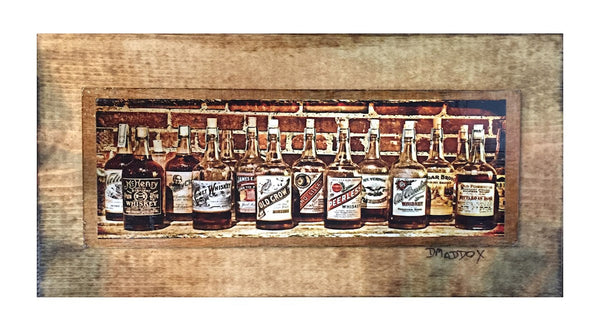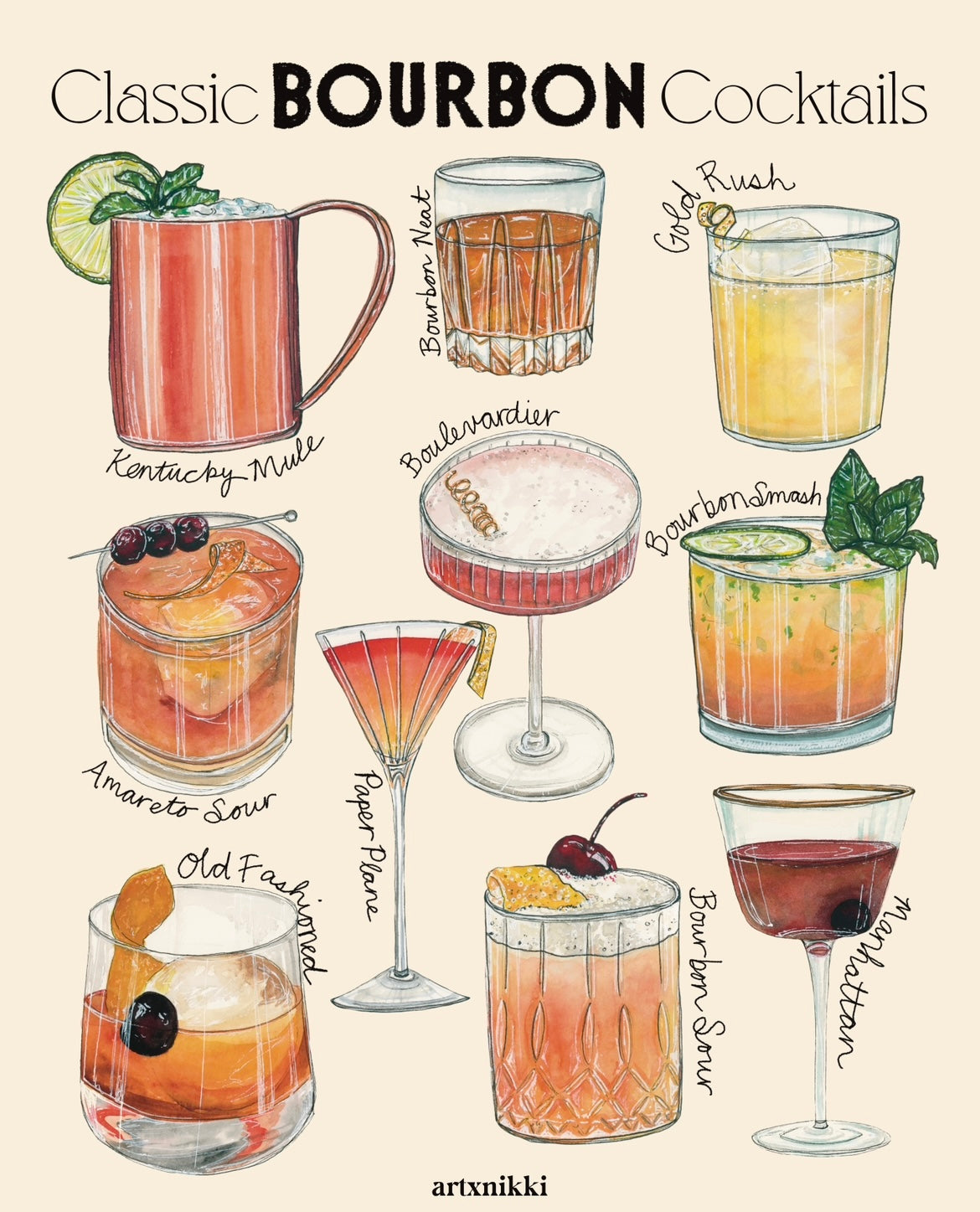Revealing the Beauty of Bourbon Art: A Homage to Craft Distillers
Revealing the Beauty of Bourbon Art: A Homage to Craft Distillers
Blog Article
The Value of Whiskey Art in Celebrating Heritage and Workmanship in the Beverage Industry
The elaborate relationship in between bourbon art and the party of heritage and workmanship within the drink market can not be overstated. Through attentively made bottles and tags, scotch brands encapsulate their historic origins and the artisanal skills that define their manufacturing techniques. This artistic dimension not just improves market appeal yet additionally works as a conduit for social storytelling, fostering a much deeper connection between the customer and the craft. As we explore the numerous aspects of this topic, fascinating concerns about the influence of contemporary trends on typical methods arise, motivating additional examination.
The Historic Roots of Whiskey
At the heart of whiskey's appeal exists a rich tapestry of historic origins that trace back to old civilizations. The beginnings of bourbon can be linked to the purification techniques of the Sumerians and Babylonians around 2000 BCE, where early types of fermented grain drinks began to emerge. Nonetheless, it was in the Middle Ages that the art of purification evolved substantially, particularly in Ireland and Scotland, resulting in the production of whiskey as we understand it today.
The term "whiskey" itself obtains from the Gaelic word "uisce beatha," indicating "water of life." This expression underscores the cultural importance of scotch in Celtic cultures, where it was usually connected with rituals, events, and common bonding. By the 15th century, purification came to be an identified craft within reclusive areas, paving the way for the establishment of legal distilleries.
As trade routes broadened, whiskey's appeal expanded, transcending local boundaries and catching the interest of aficionados worldwide. Realism Art. This historic trip reflects not only the workmanship behind whiskey manufacturing yet also its integral role in social and cultural contexts, noting it as a substantial drink throughout background
Artistic Expression in Branding
Scotch branding stands as a compelling intersection of artistry and business, where aesthetic identification plays a vital function fit consumer perception. The aesthetic appeals of scotch labels, packaging, and advertising and marketing products show not only the brand name's tale however also its core worths and heritage. With creative expression, distilleries convey a story that reverberates with consumers, stimulating feelings and stimulating connections.
Making use of color, typography, and images in branding serves to differentiate items in a saturated market. Conventional concepts may stimulate a feeling of authenticity and craftsmanship, while modern-day styles can indicate development and forward-thinking. This critical artistic instructions boosts brand acknowledgment and commitment, enabling customers to build a personal connection with the bourbon they choose.
Moreover, creative expression in branding often serves as a party of local heritage. Distilleries often include neighborhood symbols or historic references into their layouts, developing a sense of location that welcomes customers to partake in a broader social experience. Eventually, the virtuosity behind whiskey branding not just improves visual appeal yet additionally enhances the overall narrative of the brand name, cultivating a much deeper gratitude for the workmanship and heritage embedded in each bottle.
Craftsmanship in Container Style
The artistry noticeable in scotch branding prolongs past aesthetic identity to include the workmanship associated with container layout. Each container acts as a vessel not just for the spirit within, however likewise for the story it informs about its custom, origin, and top quality. The design process calls for precise interest to detail, as components such as material, form, and closure add considerably to the overall understanding of the scotch.
Workmanship in bottle layout involves picking premium glass that can enhance the scotch's color and clarity, while additionally offering a tactile experience for the consumer. The shape of the bottle should be both visually attractive and practical, usually showing the heritage of the brand. Numerous distilleries choose for distinct forms or printed logo designs that evoke a feeling of authenticity and background.
Additionally, the tag layout and typography play a crucial role in interacting the brand's narrative. Limited Edition. A well-crafted container not only captivates the customer's eye however additionally reinforces the brand name's commitment to quality and tradition. In this way, the craftsmanship of container design ends up being an essential element of the scotch experience, merging artistry with a profound regard for heritage
Social Relevance of Bourbon Art
Commemorating tradition and craftsmanship, the social relevance of whiskey art transcends simple visual appeals, linking with my website the historical and social stories of the regions from which it stems. Each bottle functions as a canvas, depicting the one-of-a-kind stories, mythology, and practices that have actually shaped neighborhood whiskey-making methods. The detailed styles typically show the heritage of the distillers, including symbols and concepts that reverberate with the society and worths of their areas.

On top of that, bourbon art plays a crucial duty in common celebrations and celebrations, working as a tangible link in between individuals and their shared experiences. By valuing the virtuosity in bourbon packaging, consumers grow a much deeper understanding and respect for the craft, ultimately enriching their satisfaction of the drink itself.
Modern Trends in Scotch Presentation
In current years, the discussion of whiskey has actually progressed to show modern tastes and trends while still recognizing standard workmanship - Whiskey Art. Distilleries are increasingly concentrating on visual components that boost the total alcohol consumption experience, linking the void find here in between heritage and modernity
Cutting-edge container designs have emerged, usually incorporating sustainable materials and imaginative labels that tell engaging tales. Many brands currently collaborate with website link neighborhood artists, instilling their products with special aesthetic expressions that reverberate with customers. In addition, limited-edition releases are commonly packaged in collectible containers, adding worth and charm for lovers.

Verdict
In final thought, scotch art serves as a vital conduit for sharing the heritage and craftsmanship intrinsic in the drink sector. Through detailed branding, innovative bottle styles, and culturally considerable creative elements, whiskey brand names efficiently honor their customs and attach with customers.


Workmanship in container design entails choosing top quality glass that can boost the whiskey's shade and clearness, while additionally supplying a tactile experience for the consumer. In this means, the craftsmanship of bottle style comes to be a crucial facet of the bourbon experience, merging artistry with a profound respect for heritage.
In final thought, bourbon art offers as a vital avenue for sharing the heritage and craftsmanship integral in the beverage market.
Report this page